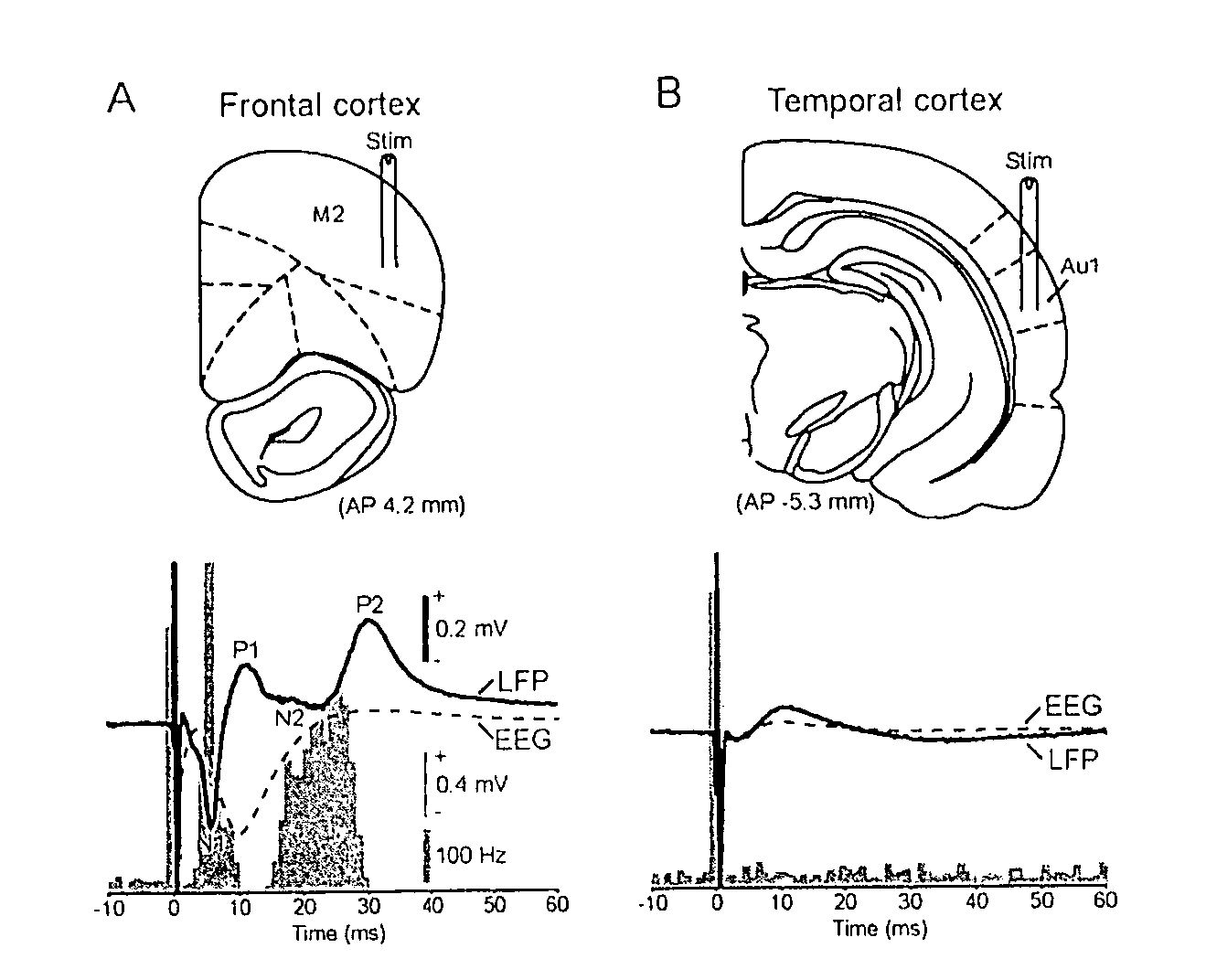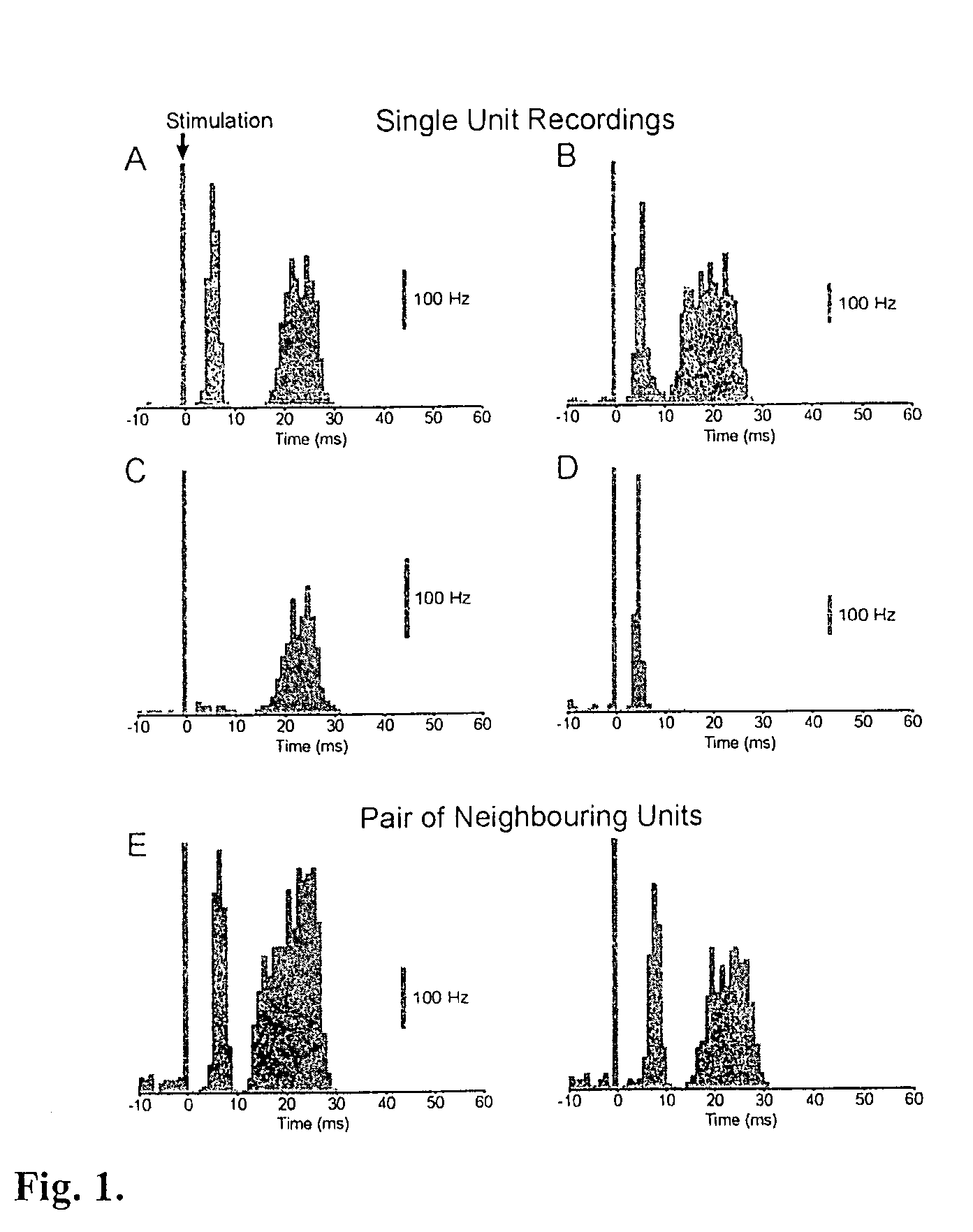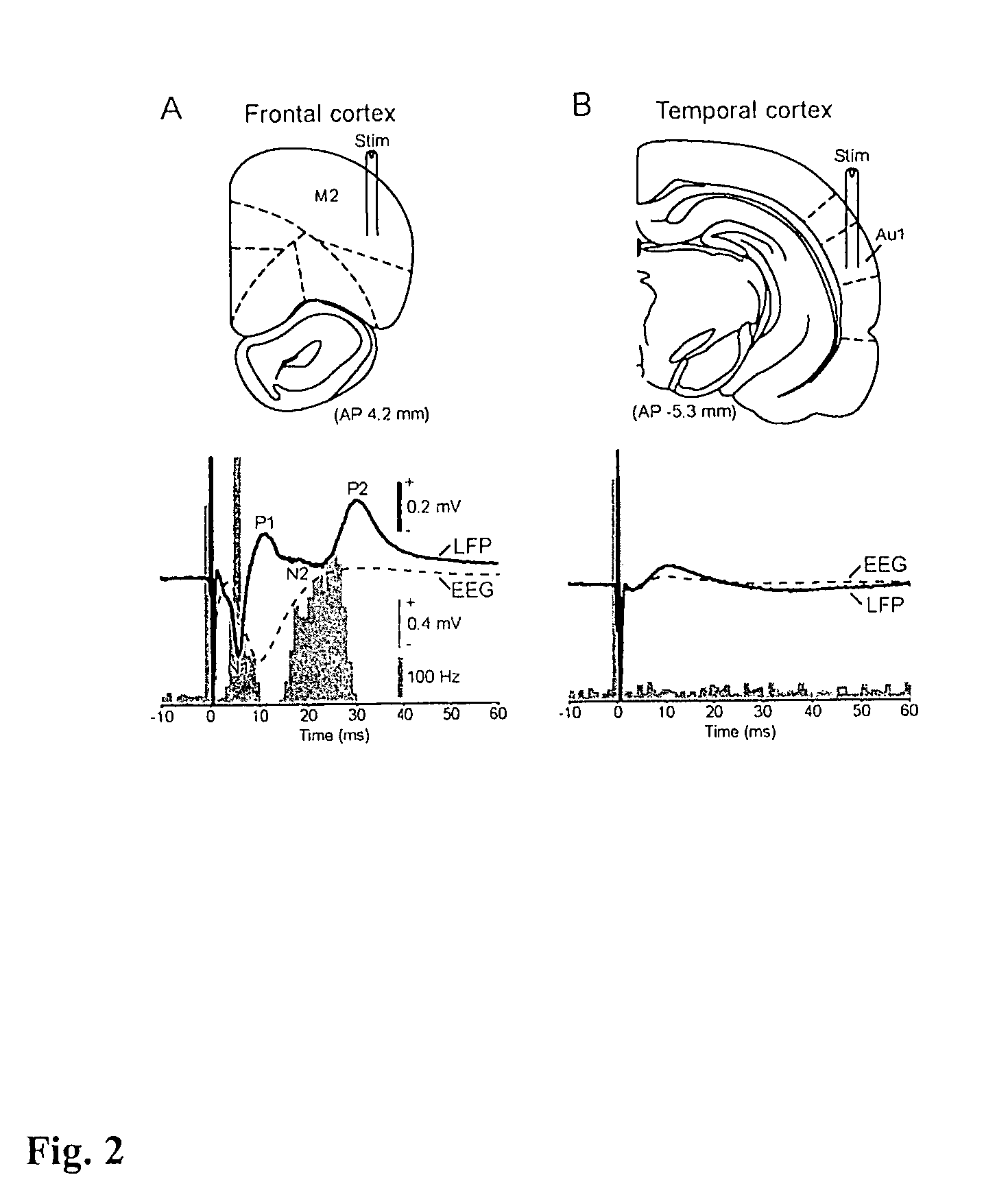Methods of neural centre location and electrode placement in the central nervous system
- Summary
- Abstract
- Description
- Claims
- Application Information
AI Technical Summary
Benefits of technology
Problems solved by technology
Method used
Image
Examples
Embodiment Construction
[0096] Specific details of the best mode contemplated by the inventors for carrying out the invention are set forth below, by way of example. It will be apparent to one skilled in the art that the present invention may be practiced without limitation to these specific details.
[0097] Materials and Methods
[0098] Electrophysiological Recordings and Labeling of Recording Sites
[0099] Experimental procedures were carried out on adult male Sprague-Dawley rats (Charles River, Margate, UK) and were conducted in accordance with the Animals (Scientific Procedures) Act, 1986 (UK) and the European Communities Council Directive (86 / 609 / EEC).
[0100] Electrophysiological recordings were made in 13 rats (230-350 g). Anaesthesia was induced with isoflurane (ISoflo™, Schering-Plough Ltd., Welwyn Garden City, UK) and maintained with urethane (1.3 gkg−1, i.p.; ethyl carbamate, Sigma, Poole, UK), and supplemental doses of ketamine (30 mgkg−1, i.p.; Ketaset™, Willows Francis, Crawley, UK) and xylazine ...
PUM
 Login to View More
Login to View More Abstract
Description
Claims
Application Information
 Login to View More
Login to View More - R&D
- Intellectual Property
- Life Sciences
- Materials
- Tech Scout
- Unparalleled Data Quality
- Higher Quality Content
- 60% Fewer Hallucinations
Browse by: Latest US Patents, China's latest patents, Technical Efficacy Thesaurus, Application Domain, Technology Topic, Popular Technical Reports.
© 2025 PatSnap. All rights reserved.Legal|Privacy policy|Modern Slavery Act Transparency Statement|Sitemap|About US| Contact US: help@patsnap.com



